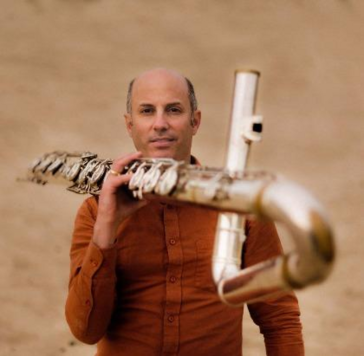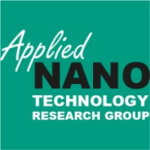Background: Knee and hip osteoarthritis (OA) among older adults account for substantial disability and extensive healthcare use. Effective pain coping strategies help to deal with OA. This study aims to determine the long-term relationship between pain coping style and the course of healthcare use in patients with knee and/or hip OA over 10 years. Methods: Baseline and 10-year follow-up data of 861 Dutch participants with early knee and/or hip OA from the Cohort Hip and Cohort Knee (CHECK) cohort were used. The amount of healthcare use (HCU) and pain coping style were measured. Generalized Estimating Equations were used, adjusted for relevant confounders. Results: At baseline, 86.5% of the patients had an active pain coping style. Having an active pain coping style was significantly (p = 0.022) associated with an increase of 16.5% (95% CI, 2.0–32.7) in the number of used healthcare services over 10 years. Conclusion: Patients with early knee and/or hip OA with an active pain coping style use significantly more different healthcare services over 10 years, as opposed to those with a passive pain coping style. Further research should focus on altered treatment (e.g., focus on self-management) in patients with an active coping style, to reduce HCU.
DOCUMENT

Abstract: Background: Hip fracture in older patients often lead to permanent disabilities and can result in mortality. Objective: To identify distinct disability trajectories from admission to one-year post-discharge in acutely hospitalized older patients after hip fracture. Design: Prospective cohort study, with assessments at admission, three-months and one-year post-discharge. Setting and participants: Patients ≥ 65 years admitted to a 1024-bed tertiary teaching hospital in the Netherlands. Methods: Disability was the primary outcome and measured with the modified Katz ADL-index score. A secondary outcome was mortality. Latent class growth analysis was performed to detect distinct disability trajectories from admission and Cox regression was used to analyze the effect of the deceased patients to one-year after discharge. Results: The mean (SD) age of the 267 patients was 84.0 (6.9) years. We identified 3 disability trajectories based on the Katz ADL-index score from admission to one-year post-discharge: ‘mild’- (n=54 (20.2%)), ‘moderate’- (n=110 (41.2%)) and ‘severe’ disability (n=103 (38.6%)). Patients in all three trajectories showed an increase of disabilities at three months, in relation to baseline and 80% did not return to baseline one-year post-discharge. Seventy-three patients (27.3%) deceased within one-year post-discharge, particularly in the ‘moderate’- (n=22 (8.2%)) and ‘severe’ disability trajectory (n=47 (17.6%)). Conclusions: Three disability trajectories were identified from hospital admission until one-year follow-up in acutely hospitalized older patients after hip fracture. Most patients had substantial functional decline and 27% of the patient’s deceased one-year post-discharge, mainly patients in the ‘moderate’- ‘and severe’ disability trajectories.
DOCUMENT

De zoekopdracht ‘bewegend leren’ levert in Google 400.000 hits op. De zoekopdracht dynamische schooldag’ laat 29.000 hits zien. Dat is veel voor begrippen die we pas zeven jaar kennen. Op de Nederlandse Onderwijs Tentoonstelling (NOT) 2023 waren meer dan 100 bedrijven aanwezig die aangaven iets te doen met bewegend leren. Hoe verhouden de concepten dynamische schooldag en bewegend leren zich tot elkaar? Hoe ontwikkelen we kwaliteitsbesef voor deze concepten? Want nieuw of hip is niet automatisch zinnig of effectief.
MULTIFILE
MUSE supports the CIVITAS Community to increase its impact on urban mobility policy making and advance it to a higher level of knowledge, exchange, and sustainability.As the current Coordination and Support Action for the CIVITAS Initiative, MUSE primarily engages in support activities to boost the impact of CIVITAS Community activities on sustainable urban mobility policy. Its main objectives are to:- Act as a destination for knowledge developed by the CIVITAS Community over the past twenty years.- Expand and strengthen relationships between cities and stakeholders at all levels.- Support the enrichment of the wider urban mobility community by providing learning opportunities.Through these goals, the CIVITAS Initiative strives to support the mobility and transport goals of the European Commission, and in turn those in the European Green Deal.Breda University of Applied Sciences is the task leader of Task 7.3: Exploitation of the Mobility Educational Network and Task 7.4: Mobility Powered by Youth Facilitation.
Aanleiding: De belangstelling voor gezonde en veilige voeding is groot. Bij de gezondheidseffecten van voeding spelen de darmen een cruciale rol. Verschillende soorten bedrijven hebben behoefte aan natuurgetrouwe testmodellen om de effecten van voeding op de darmen te bestuderen. Ze zijn vooral op zoek naar modellen waarvan de uitkomsten direct vertaalbaar zijn naar het doelorganisme (de mens of bijvoorbeeld het varken) en die niet gebruikmaken van kostbare en maatschappelijke beladen dierproeven. Doelstelling Het project 2-REAL-GUTS heeft als doel om twee innovatieve dierproefvrije darmmodellen geschikt te maken voor onderzoek naar voedingsconcepten en -ingrediënten. De twee darmmodellen die worden toegepast zijn darmorganoïden, minidarmorgaantjes bestaande uit stamcellen, en darmexplants bestaande uit hele stukjes darm verkregen uit relevante organismen. Beide modellen hebben potentieel heel uitgebreide toepassingsmogelijkheden en hebben ook grote voordelen ten opzichte van de huidige veelgebruikte cellijnen, omdat ze meerdere in de darm aanwezige celtypen bevatten en uit verschillende specifieke darmregio's te verkrijgen zijn. Gezamenlijk gaan de partners werken aan: 1) het aanpassen van de kweekomstandigheden zodat darmmodellen geschikt worden om de vragen van partners te beantwoorden; 2) het vaststellen van de toepassingsmogelijkheden van de darmmodellen door verschillende stoffen en producten te testen. Beoogde resultaten Kennisconferenties, publicaties en exploitatie van de modellen zullen zorgen voor het verspreiden van de opgedane kennis. Omdat het project gebruikmaakt van moderne, op de toekomst gerichte laboratoriumtechnieken (kweekmethoden met stamcellen en vitaal weefsel, moleculaire analyses en microscopie), leent het zich uitstekend om geïmplementeerd te worden in het hbo-onderwijs. Als spin-off zal het project dan ook voorzien in een specifieke, voor Nederland unieke hbo-minor op het gebied van stamcel- en aanverwante technologie (zoals organ-on-a-chiptechnologie).
Students in Higher Music Education (HME) are not facilitated to develop both their artistic and academic musical competences. Conservatoires (professional education, or ‘HBO’) traditionally foster the development of musical craftsmanship, while university musicology departments (academic education, or ‘WO’) promote broader perspectives on music’s place in society. All the while, music professionals are increasingly required to combine musical and scholarly knowledge. Indeed, musicianship is more than performance, and musicology more than reflection—a robust musical practice requires people who are versed in both domains. It’s time our education mirrors this blended profession. This proposal entails collaborative projects between a conservatory and a university in two cities where musical performance and musicology equally thrive: Amsterdam (Conservatory and University of Amsterdam) and Utrecht (HKU Utrechts Conservatorium and Utrecht University). Each project will pilot a joint program of study, combining existing modules with newly developed ones. The feasibility of joint degrees will be explored: a combined bachelor’s degree in Amsterdam; and a combined master’s degree in Utrecht. The full innovation process will be translated to a transferable infrastructural model. For 125 students it will fuse praxis-based musical knowledge and skills, practice-led research and academic training. Beyond this, the partners will also use the Comenius funds as a springboard for collaboration between the two cities to enrich their respective BA and MA programs. In the end, the programme will diversify the educational possibilities for students of music in the Netherlands, and thereby increase their professional opportunities in today’s job market.

Lectoraat, onderdeel van Saxion

Lectoraat, onderdeel van Saxion

Lectoraat, onderdeel van Saxion